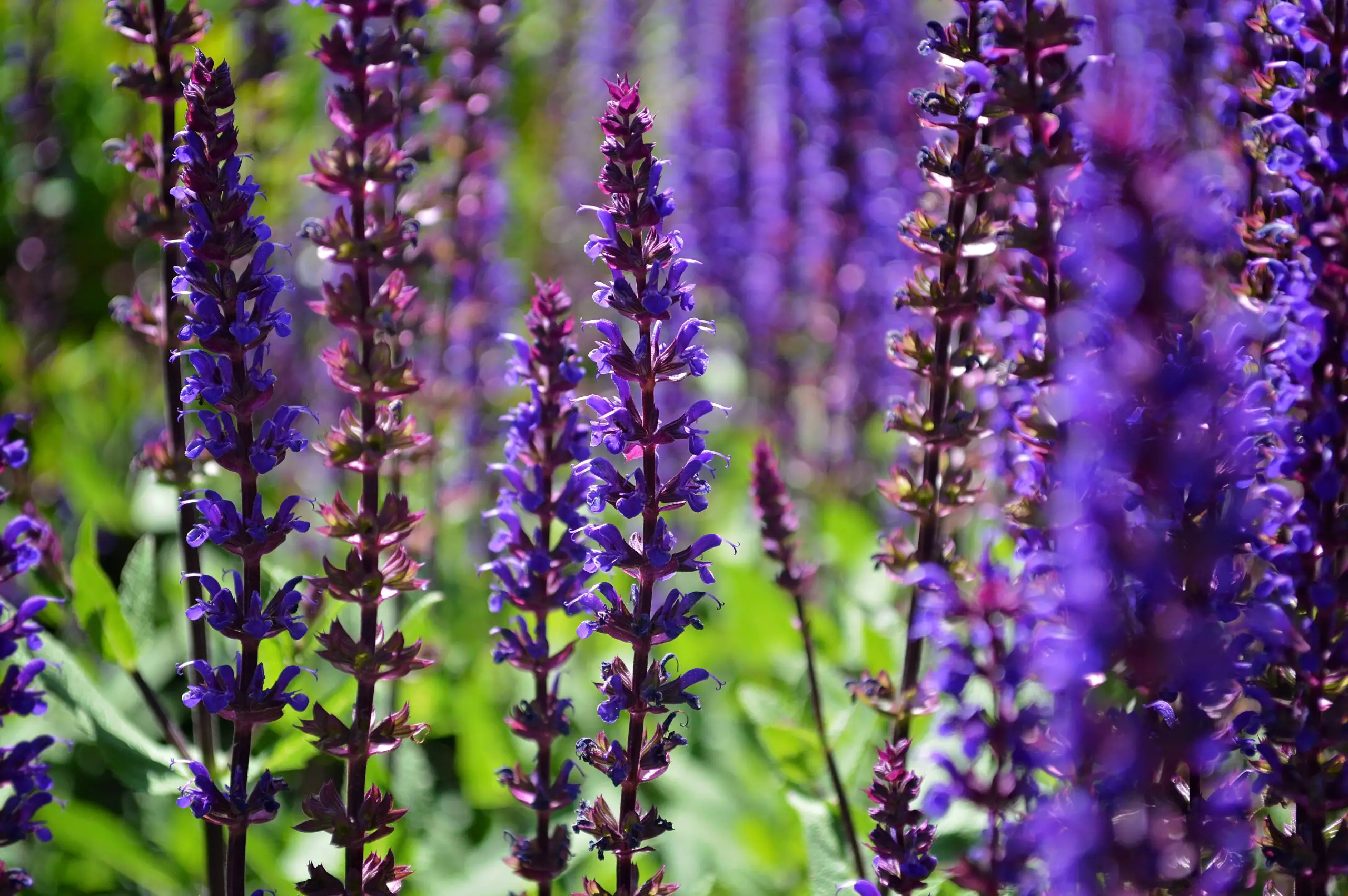Last Updated on April 16, 2024 by Real Men Sow
Salvia Genus has around 900 species that differ in size and color. Their flowers are tubular with a split lower petal. The plant’s foliage and colors vary. Since the salvia genus is so beautiful, this growing and pruning salvias guide will be useful for your garden.

How to Grow Salvias
Salvias can be grown in well-drained soil and full sun. To prolong its flowering, cut back the spent blooms and make summer cuttings to protect against winter losses. Mulch perennial salvias with compost or well-rotted manure every year in mild areas. You can also dig up the plants and plant them indoors for winter.
Where to Grow Salvias
Salvias thrive best in full sun. A south-facing position is ideal. They are able to tolerate very poor soils and prefer it over unworked clay.
Salvias can be used in coastal gardens and they are a good choice for drought gardens. They are stunning when they are planted together, and many species will look great in a tropical garden.
Salvias of every type can be sown indoors. Some varieties that flower for very long periods of time, such as Salvia greggii. You can move the flowers from the garden to the conservatory. The flowers will still be in bloom throughout winter. To improve drainage, add horticultural gritty to the compost and then feed container-grown plants in the spring. The plants grown in garden soil do not require feeding.
Before Pruning Salvias, Plant Them Well
To aid drainage, you can add horticultural gritty to heavy soils before planting. Place your salvia at the same depth as the pot. Backfill the pot and water well.
It may be easier to plant tender varieties in containers, so that they can be moved to frost-free areas before the autumn frosts.
Taking Care of Salvias
Salvia care varies greatly depending on what type of salvia you are growing. For annual salvias, you can simply lift them up before the first frost and place them on the compost heap.
You can cut hard perennial salvias that are hardy in spring and autumn. Half-hardy herbaceous varieties can be cut back in the autumn, but they must spend winter in a frost-free area. You should not prune them until spring if you want to keep them outdoors. Shrubby plants should be pruned lightly in spring. In autumn, new growth can form.
You can leave pruning until spring if you aren’t sure which salvia you’re growing. This will provide them with some protection during winter.
Pruning Salvias In The Garden
Salvia cuttings can be taken in April, August and September. Non-flowering stems less than 8cm in length should be removed and take out the lower leaves, then prune each cut just below a node. Place the cuttings in a pot with pre-watered compost. Place the cuttings in a pot of pre-watered cutting compost. Cover the pot with a plastic bag.
To prevent them from being scorched by strong sunlight, place the cuttings in a cool greenhouse. The cuttings can be potted after three weeks.


